Patty Carroll has been known for her use of highly intense, saturated color photographs since the 1970’s. After teaching photography for many years, she delights viewers with her playful critique of home and excess in“Anonymous Women;” a 4-part series of studio installations made for the camera, addressing women and their complicated relationships with domesticity. The photographs are exhibited in large scale and previous iterations were published as a monograph in 2017. The series has been exhibited internationally, has won multiple awards, and acknowledged as one of Photolucida’s “Top 50” in 2104 and in 2017, and has been featured in prestigious blogs and international magazines such as the Huffington Post, the BJP in Britain, and NYT LensBlog.
Grants/Prizes include 2003 Artist Fellowship, Illinois Arts Council, 2011 Art Takes Miami, Photography Category, 2014 & 2017 Photolucida Critical Mass: “Top 50,” and Grand Prize winner in “Herstory” with SeeMe, 2019.



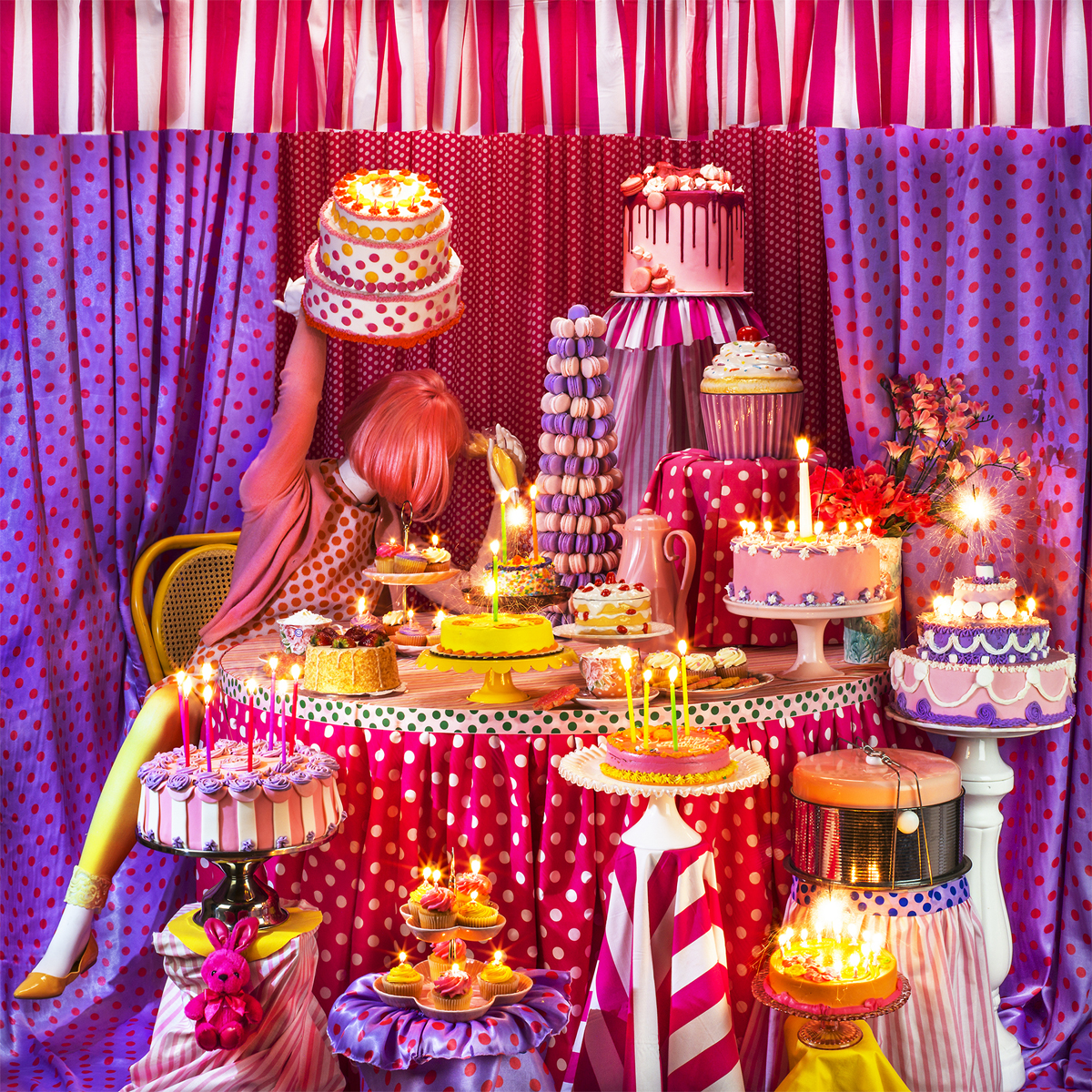
Anonymous Women: Domestic Demise
The still-life narratives in “Anonymous Women: Demise” comment on the mania of managing a home. The domestic objects take over, and the woman is crushed by her own possessions, obsessions and tasks, leading to mishaps and mayhem. I create imaginary, humorous worlds in the studio to photograph that critique and satirize claustrophobic expectations of domestic perfection, an unending but frustrating endeavor. Currently, as all of us are stuck inside our homes, the crushing experience of being home is often humorous yet, sadly dreadful.
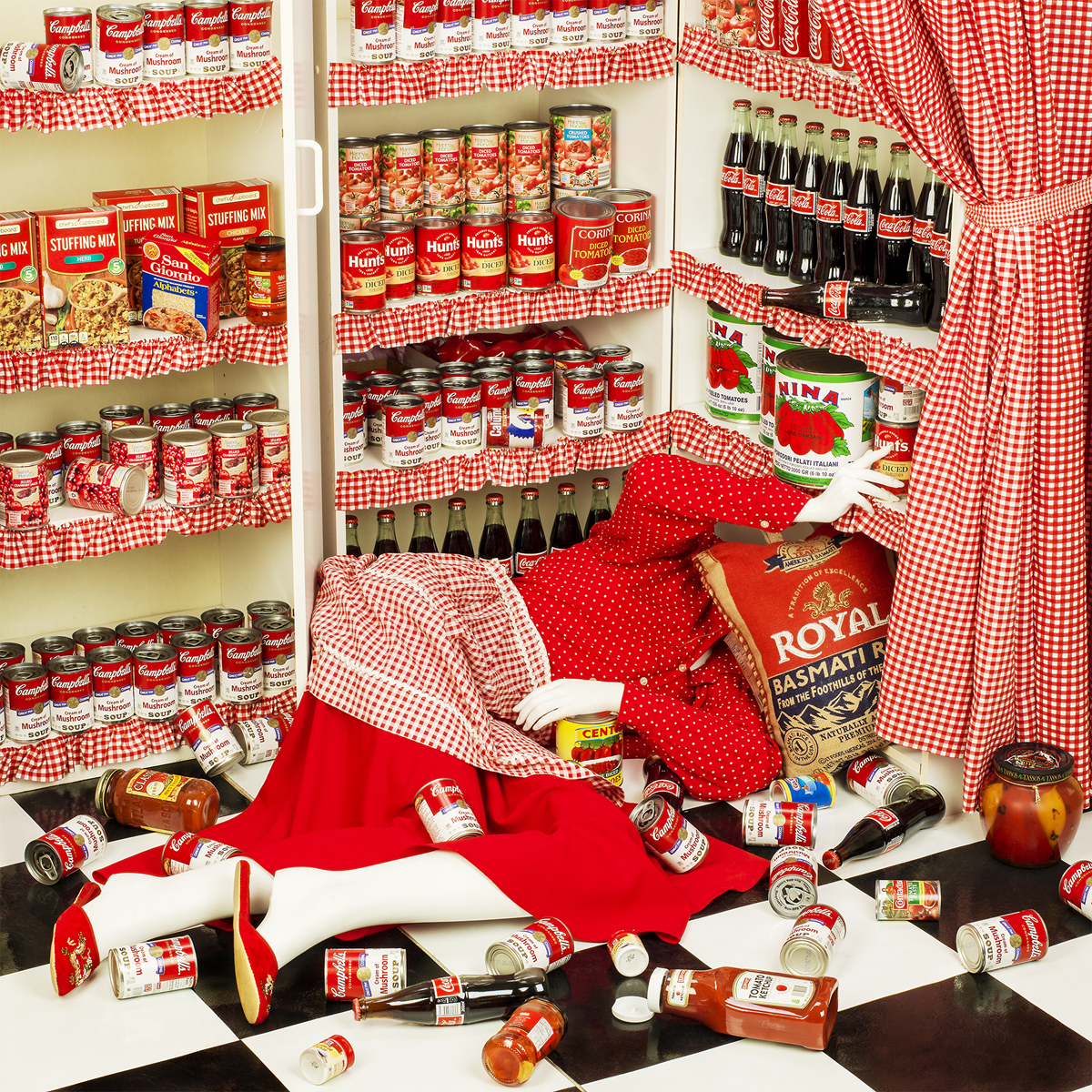
Kyra Schmidt: Hi Patty. Thank you so much for taking this time with me. Your artist statement offers us a wonderful path through the book, and the images are so incredibly rich and compelling. To begin with a little introduction, can you speak to the inspiration for this series or what led you to its path?
Patty Carroll: This project is about making a home, which is an issue that has obsessed me forever, (it seems) possibly, because as a kid, our family life was difficult and unusual to say the least. I always wanted to have a “perfect” home where everyone got along, was sober, was home for dinner, and had towels from a store, not pilfered from the last motel we stayed in. It was also a source of great dark humor and sarcasm, which I fully embrace now, but not so much as a kid! I spent much of my teen/young adult years trying to sew, which was an incredibly symbolic way of piecing together and re-forming my life the way I wanted it. Fabric played a big part of my frustration of life. Drapery also becomes a symbol in this work for an established, traditional home environment where the décor is considered seriously. After all, a perfect home does not have mismatched furniture and styles. A perfect interior has a matching sofa and drapes! Drapes also close off the outer world and contain life within, as well as the finishing touch to a proper home.
I attended Catholic schools from first grade through high school where I wore uniforms, and had teachers who were nuns that wore habits. This was a great leveler of position and place, but it was also about mystery. The identity of the person who was the teacher was completely obfuscated by her clothing and the great swirls of material that seemed to surround each nun. Who knew what she was hiding under those layers of cloth? Today, there are similar and much more real concerns about women wearing headscarves etc. because of terrorism. I suppose we experienced a form of disciplinary terrorism then, but it was usually because one hadn’t done their homework.
The Anonymous Women project began while living in England, where my identity was determined by my domestic position. I found that in a more traditional culture than the United States, one’s domestic status often eclipses one’s professional or personal sense of self. Being known as Mrs. Jones rather than the independent, teacher photographer, Patty Carroll sent me into a small identity crisis. I made photographs of vulnerable, stark heads hiding behind various domestic objects as my initial response to this predicament.
Returning home to live in the USA, we bought a 1950’s ranch house in a suburban area near the beach in northern Indiana. It has the original pink kitchen, which inspired me to return the entire house to its origins, and I proceeded to stalk estate sales, thrift stores, antique malls and occasionally Ebay for the right furnishings. It was like a giant puzzle with pieces scattered everywhere and all I had to do was find them. Simultaneously, my niece was sent to Iraq when the war first began there. She sent home a picture of herself sitting in the desert in her camos, gun in her lap and horribly sunburned. I thought about the irony of women sent to war, the women in Iraq whose homes were being destroyed by our troops, and my own obsession to decorate a house in the ideal way I wanted as a child. It occurred to me that the place of safety and comfort, the home, for most people was a tenuous but essential experience.
The entire Anonymous Women series is about becoming the part of the dwelling itself and experiencing various facets of domesticity. The interior of the home is comforting, but can also camouflage individual identity, especially when the idealized decor becomes an obsession, or indication of position or status. Staying home for some women is a place of power, while others abhor because of its prison-like atmosphere. The “constructed” images in the ongoing series are of home turned inside out; where things are topsy-turvy and scale is variable. Decoration is out of control, and the woman of the house is lost in her own madness. The “Domestic Demise” stage of the series is when the woman becomes a victim of her own obsessions and activities. She is no longer in control and life is a series of mishaps and mayhem.
As we are all stuck in our homes right now, the work speaks to our frustration – both the dread and joy of home-life right now!
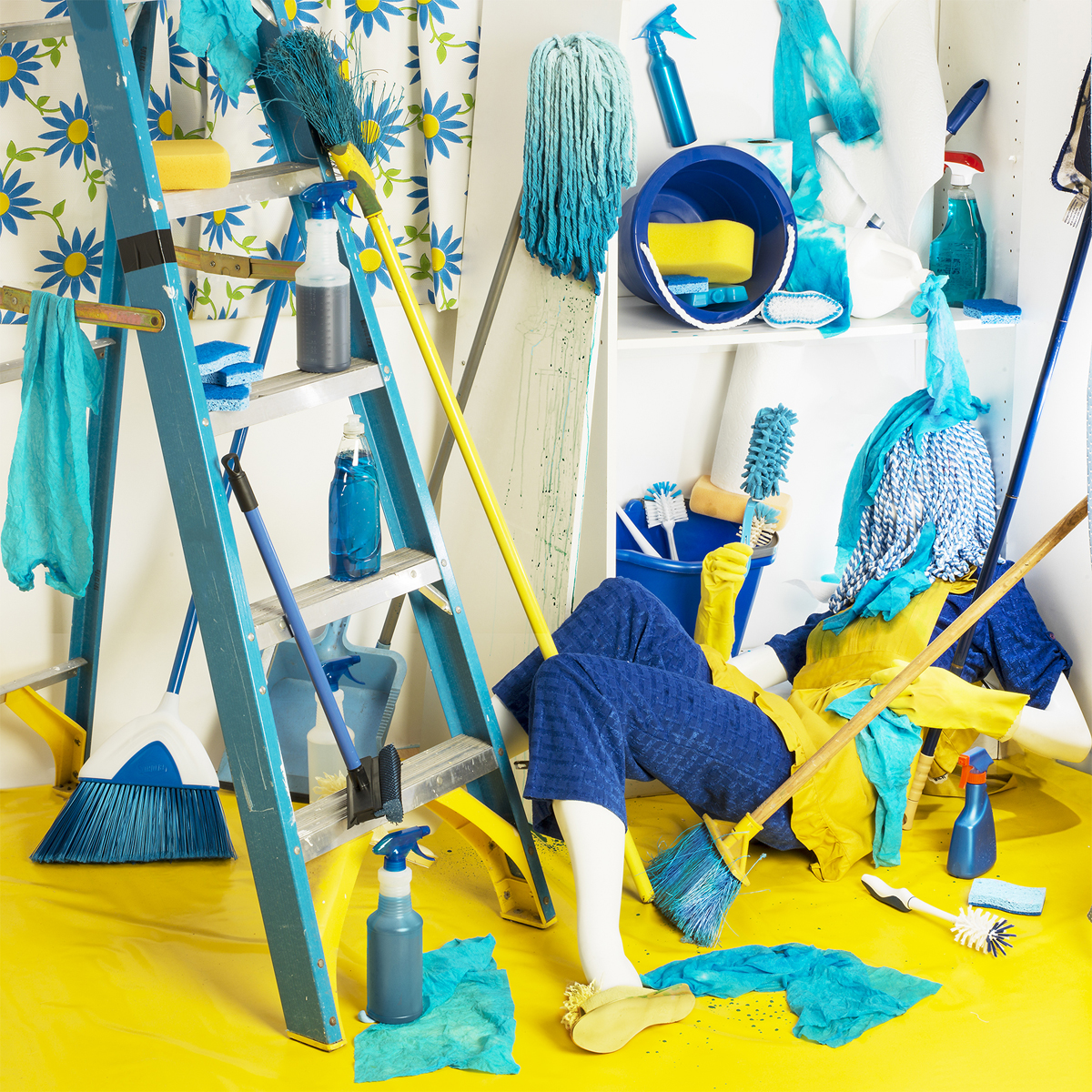
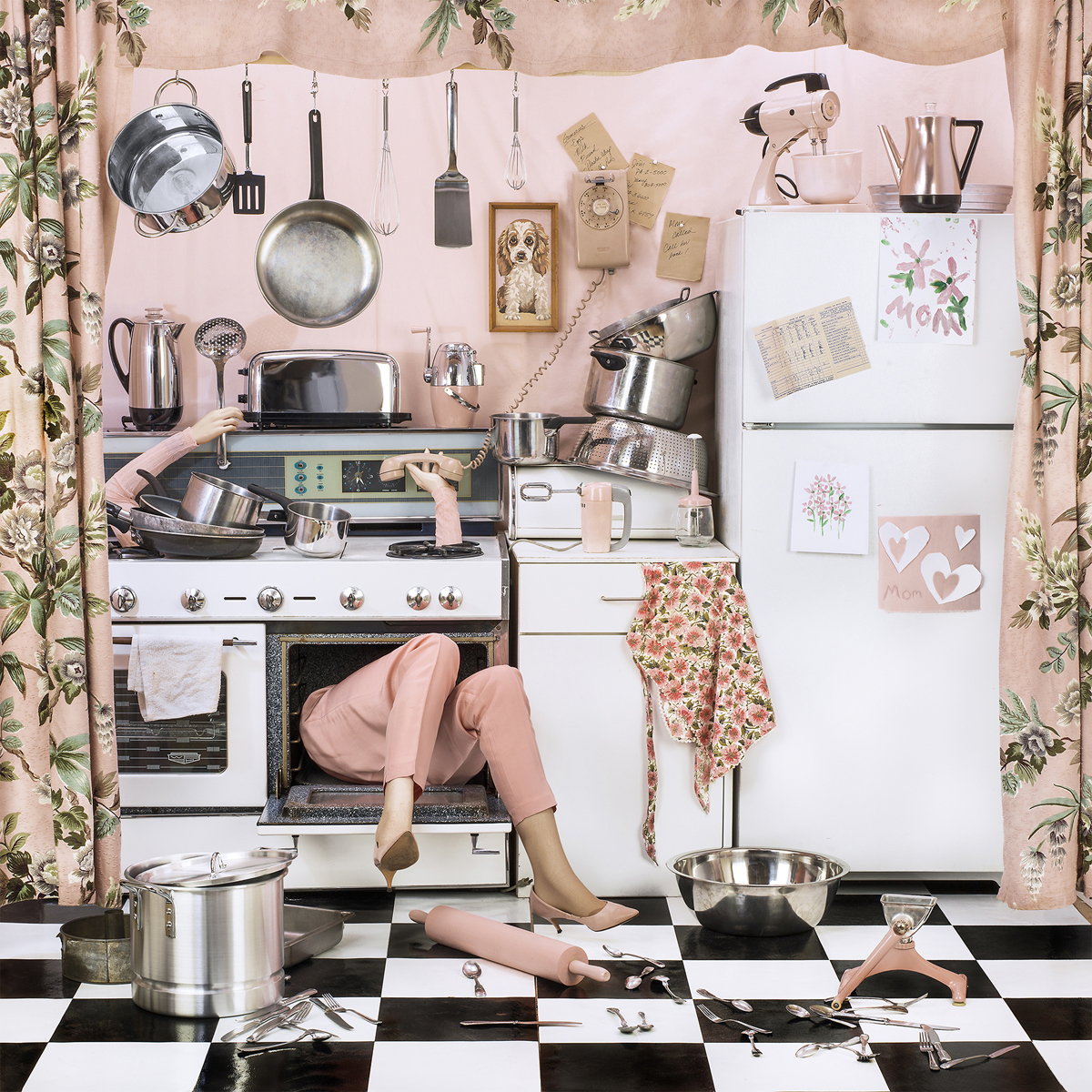

Kyra Schmidt: I enjoyed delving into this background information, and it has opened my eyes even more to your work. It seems as if this series is very personal (while also incredibly universal). Have you found working through it to be therapeutic?
Patty Carroll: Possibly therapeutic because I can make rooms I would never dream of living in, but have the fun of a full size doll house. Nothing in art is as direct as we imagine. Experiences, things, events, places all get jumbled up like in dreams, and come out in some other weird way as artwork!
It may be that all art is therapeutic, in that artists have obsessions about bits stuck in their memories or a far corner of their brain that is unexplainable. After starting to do something related to that niggling bit, the work takes over, and has a life of its own.
Kyra Schmidt: It’s funny, I wasn’t born until the early 90’s and yet I feel surprised by how much I can relate to your experiences, description, and some of the images. More in feeling overwhelmed by expectations or the lack thereof for myself as a young female. That being said, I feel like (or would like to hope) that the tide is changing. I am curious, why did you decide to sequence the book from glam to gloom?
Patty Carroll: Better than gloom to glam. Nothing ever works that way! We all have glam aspirations at some point in our lives, or at least hope. Nothing turns out exactly as we hope or imagine. It doesn’t always end in gloom, but it is always different. Expectations for me were always elusive, but talking about the female experience is perhaps universal.
I think the issue is what are we contributing to the human condition. For some women, running a home and raising children makes a huge impact; the world is a better place with sane, smart and level-headed people. For others, a career is ultimate. No matter what, we all come home to a nest that we make for ourselves to regroup and confirm individual identity.
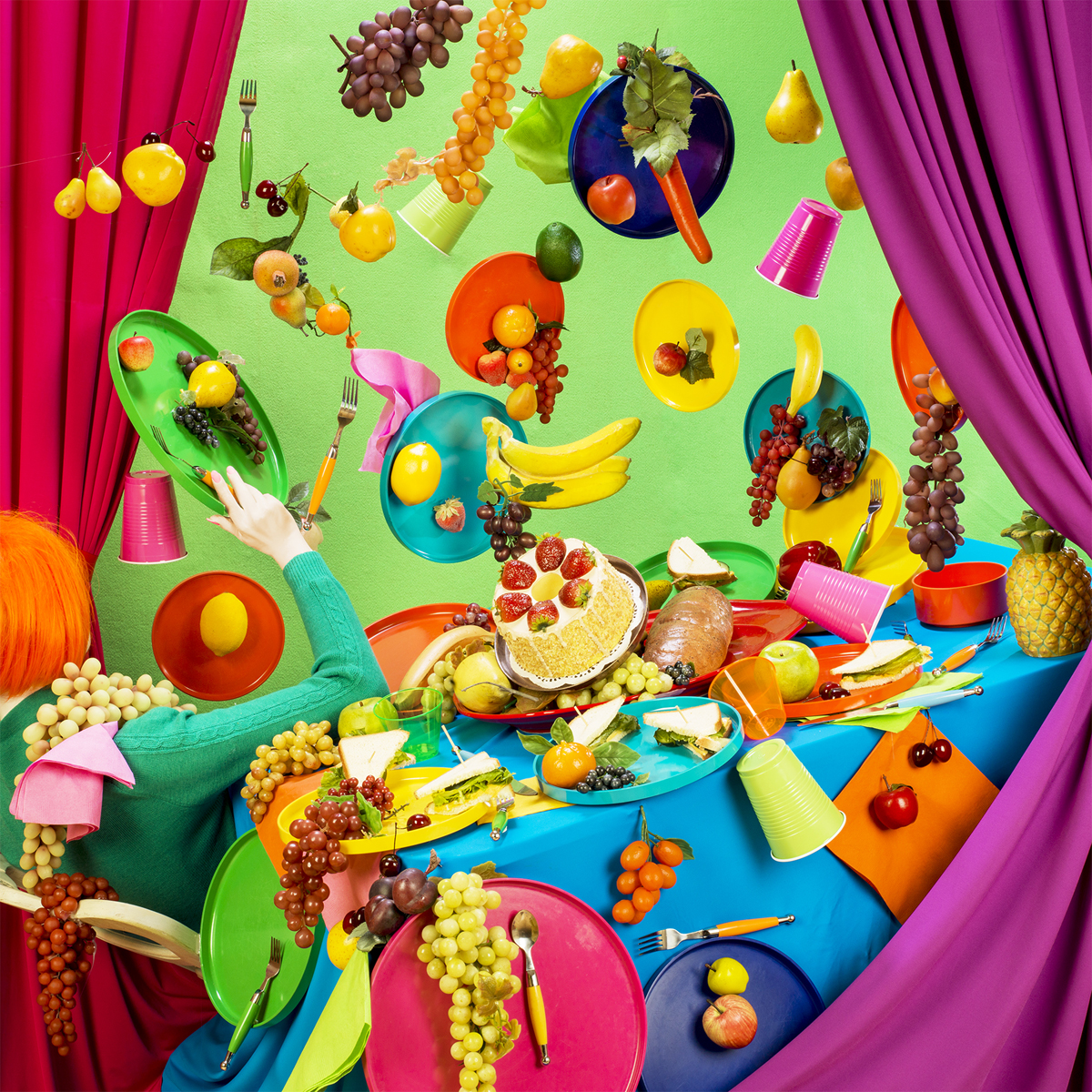

Kyra Schmidt: Is there semblance behind the use of mannequins over human models?
Patty Carroll: The switch was made mostly for technical reasons. The later work with so many objects was so elaborate to set up, we could not ask a person to stand still so long! All of the drapery pictures were made with live women, but now the pictures take several days, if not weeks to assemble and shoot. We have tried to make the mannequins (for the most part) look like a real human being, but in some cases, we can use her parts in strange ways that add to the complication of the scene. I do wish I had a mannequin that looked real, but would bend everywhere and not be so stiff!
However, as the work progressed, more of the figure was seen, so the ideal mannequin also became like the ideal woman, living in her ideal house, but everything has gone wrong. I like the idea of destroying myths.
Kyra Schmidt: In addition to socially salient feminist themes within this work, it also seems to comment on mass commodification. The subject is always drowning in their activities, obsessions, things. I think the lot of us can relate. For me it communicates the idea of losing all ability to make sense of the distinction between nature and artifice – there is only the simulacrum. Do you intentionally hope to draw attention to this objecthood?
Patty Carroll: Yes, we (especially earlier generations) substitute stuff for all kinds of things; memories, people, places, moments. I get a lot of things in thrift stores and estate sales. Finding things that people have treasured is a sad and yet enlightening experience for me. Objects are often immersed in meaning that are particular to a person’s experiences. There is a book I read years ago called the “Meaning of Things” by Mihaly Csikszentmihalyi. I highly recommend it, because he explains our relationship with the stuff that we accumulate and surround ourselves.
I know that younger people do not want as much stuff as their parents, and certainly not the same stuff. They claim they want experiences not things. However, I have seen that as people get older, that seems to change quite a bit. Suddenly with a house, kids, and responsibilities, along comes a bunch of stuff that seems necessary. Somehow it takes over!
Anyway, we have too many things and it is killing our souls, the environment, and cluttering up our houses. I am at fault as much as anyone. I have little collections of things everywhere, like the 1950’s plates painted with landscapes in my kitchen. Why? Who knows, but they are cool, under appreciated and all different, even though they were probably painted in factories in Japan.
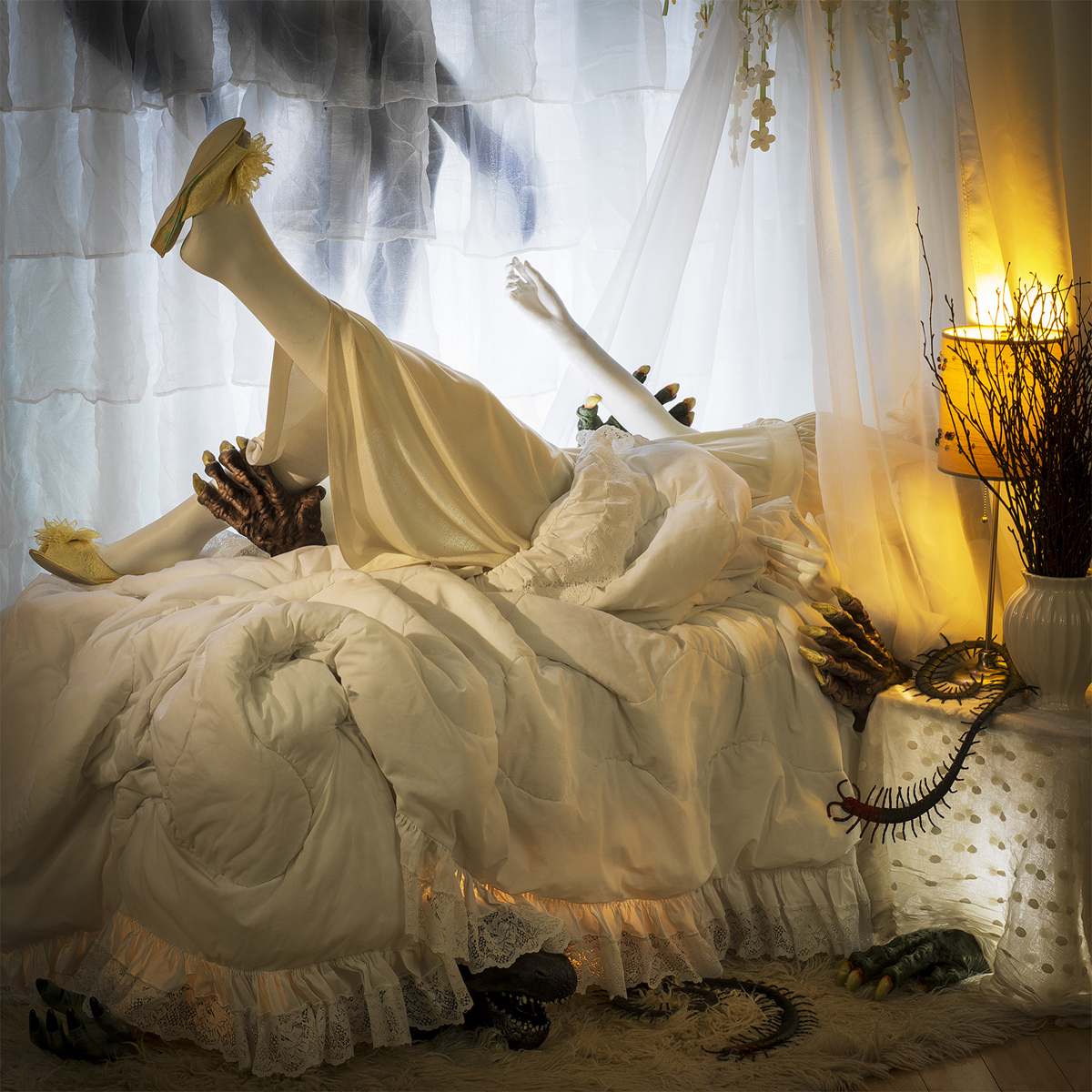
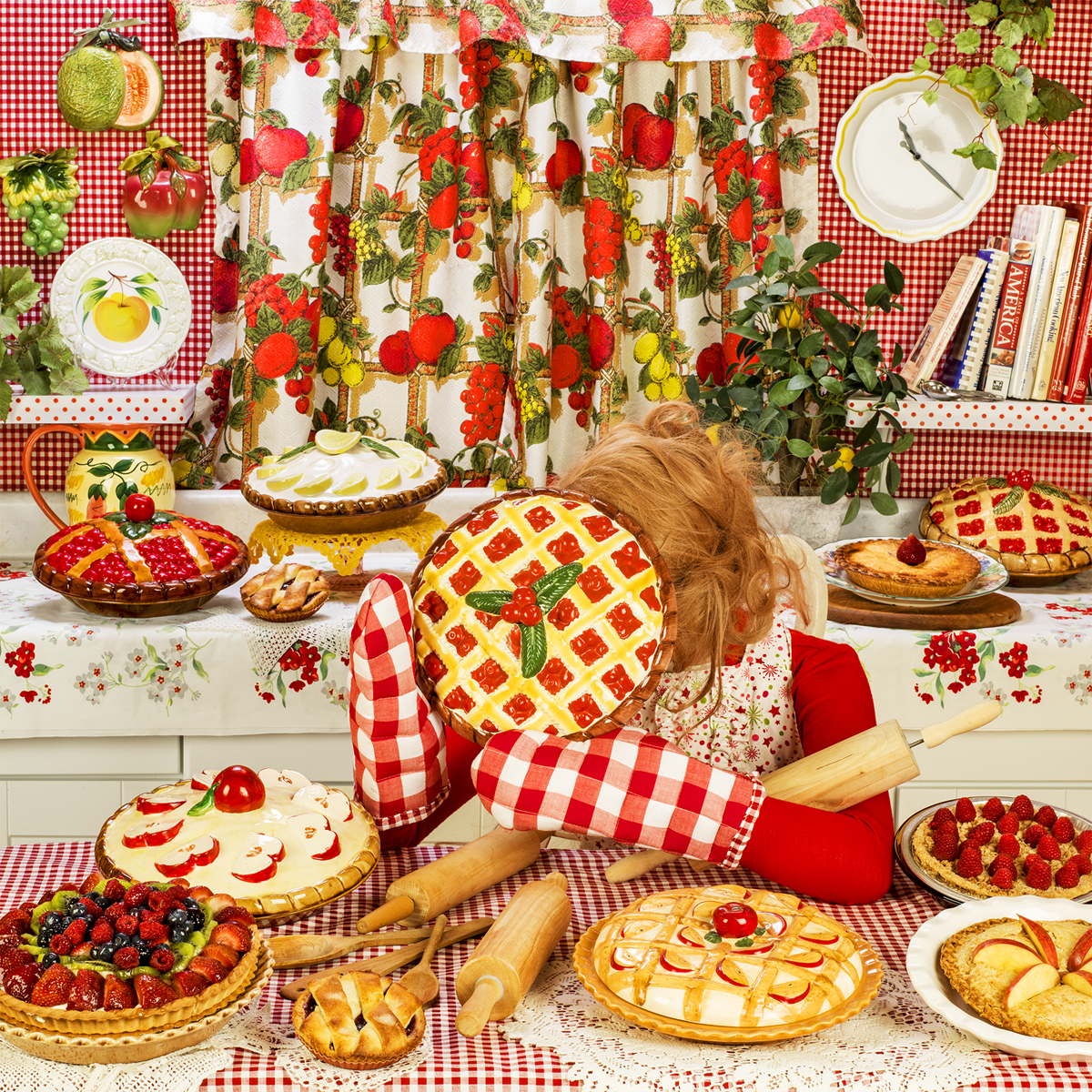
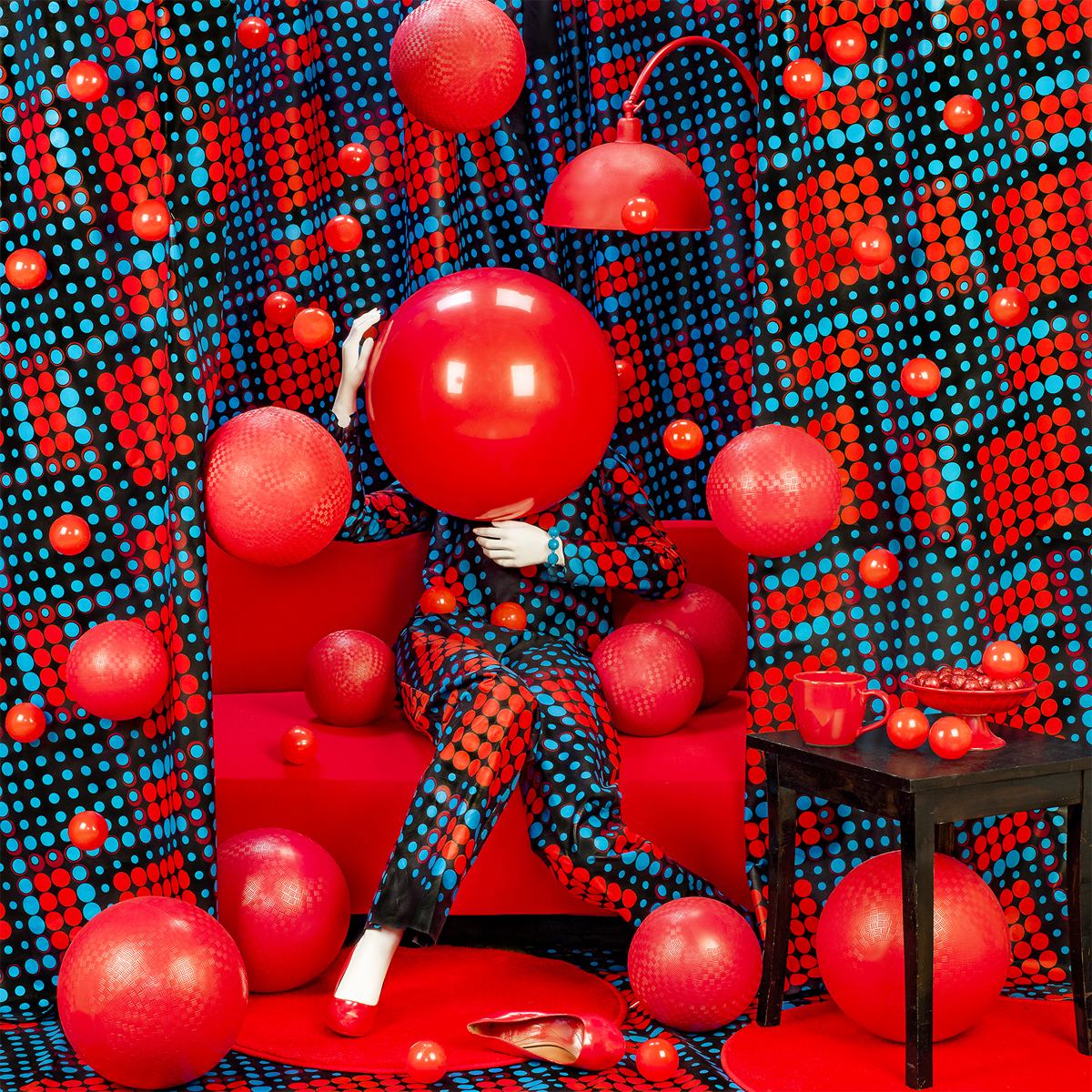

Kyra Schmidt: Do you have a favorite image? Perhaps one that resonates with you the most, or that you have a particularly nostalgic story behind?
Patty Carroll: I don’t have a favorite image, but here is a story that helps explain my relationship to the work. It refers to the photograph, “Dished” is of a person in the kitchen sink with dishes and bubbles everywhere.
When I went off to college, I came home for Thanksgiving break, as everyone does. I noticed in the kitchen the appearance of an automatic dishwasher under the counter, which had never been there before. So I exclaimed to my mother, “You got a dishwasher!” She replied, “Well, you went away.” This was a typical sarcastic remark, that was darkly funny and true to my mother’s humor. I am not sure that qualifies as nostalgia.
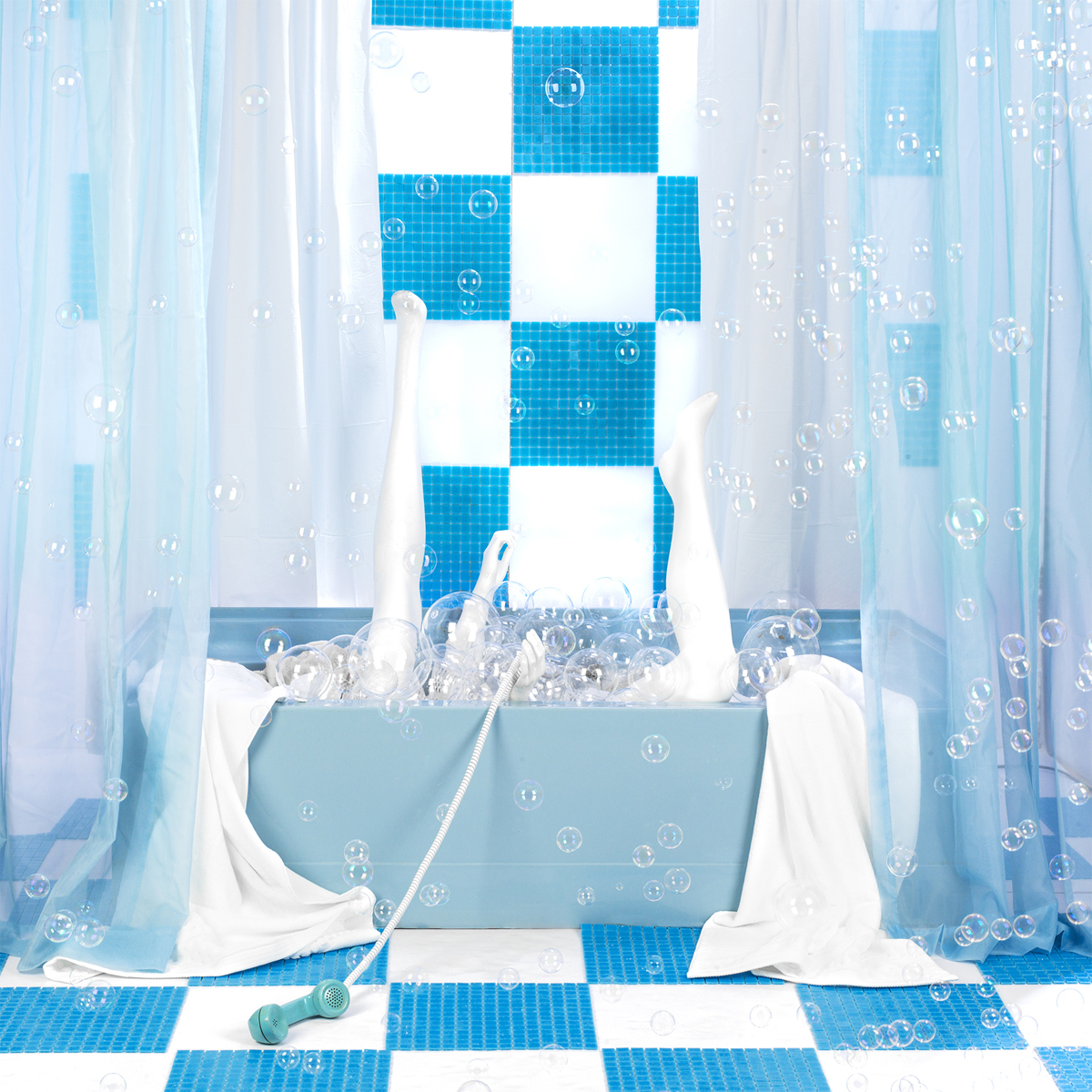

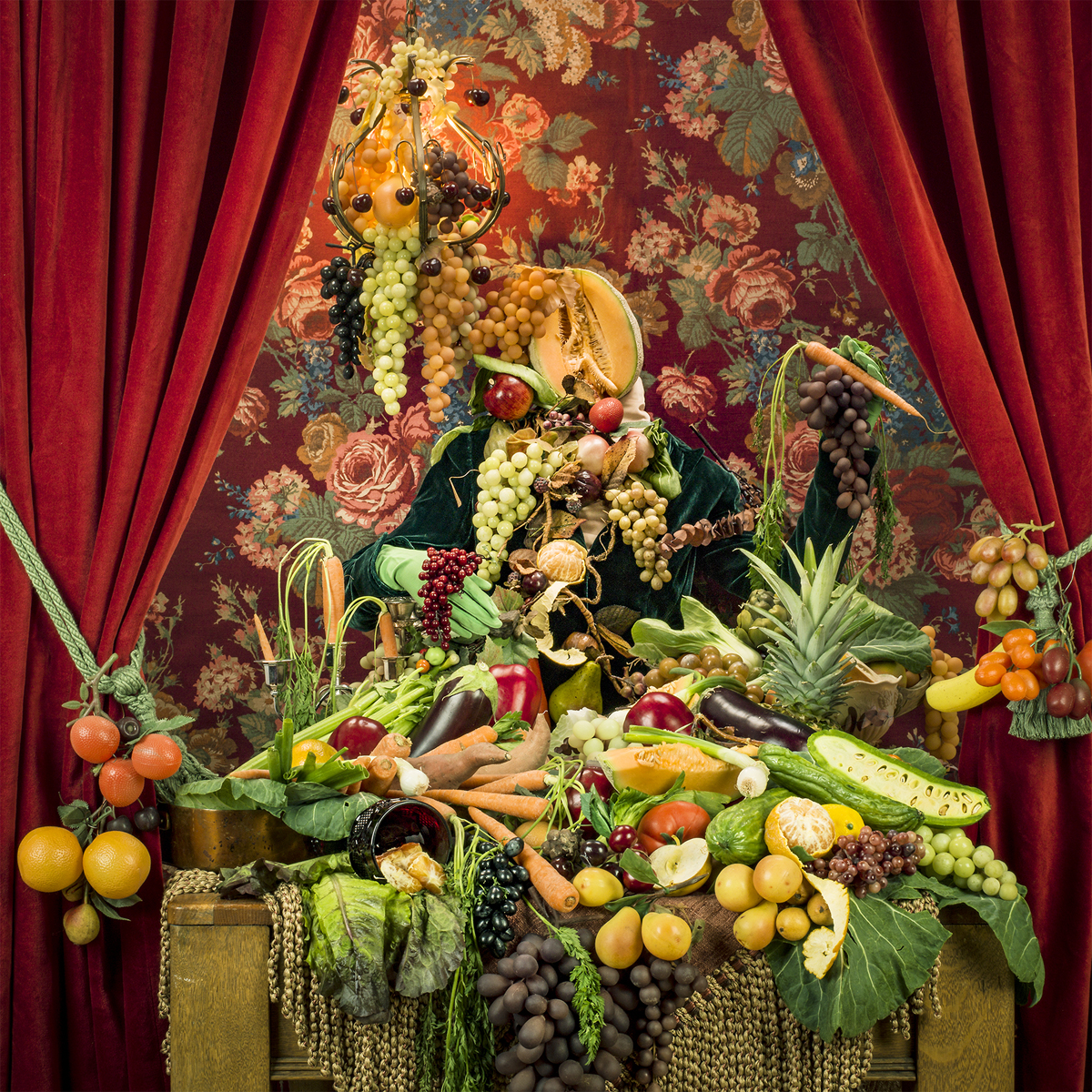
To view more of Patty Carroll’s work please visit her website.
And to order a copy of Patty’s new book, visit the shop!